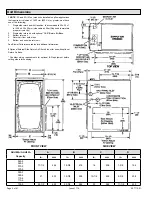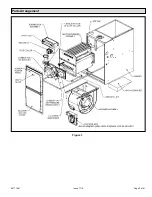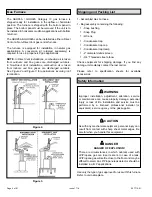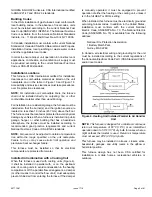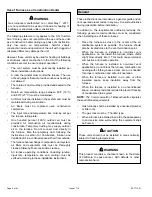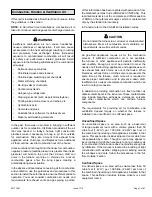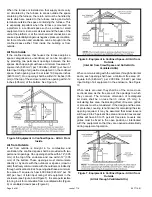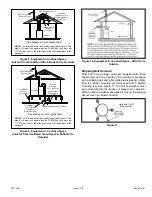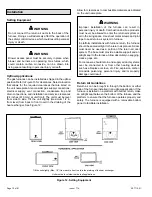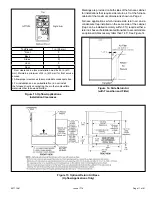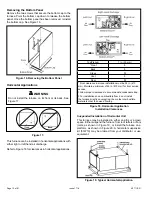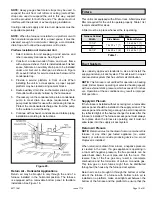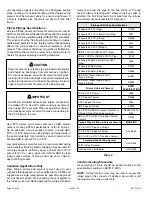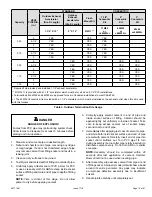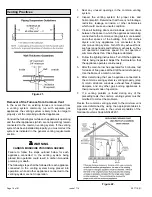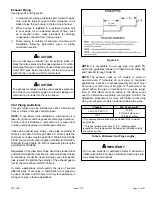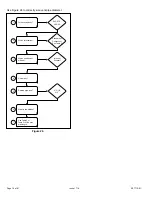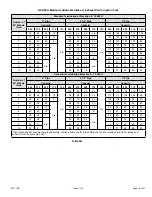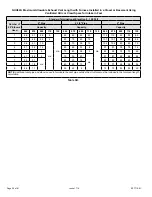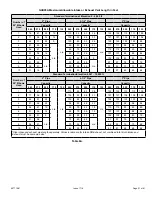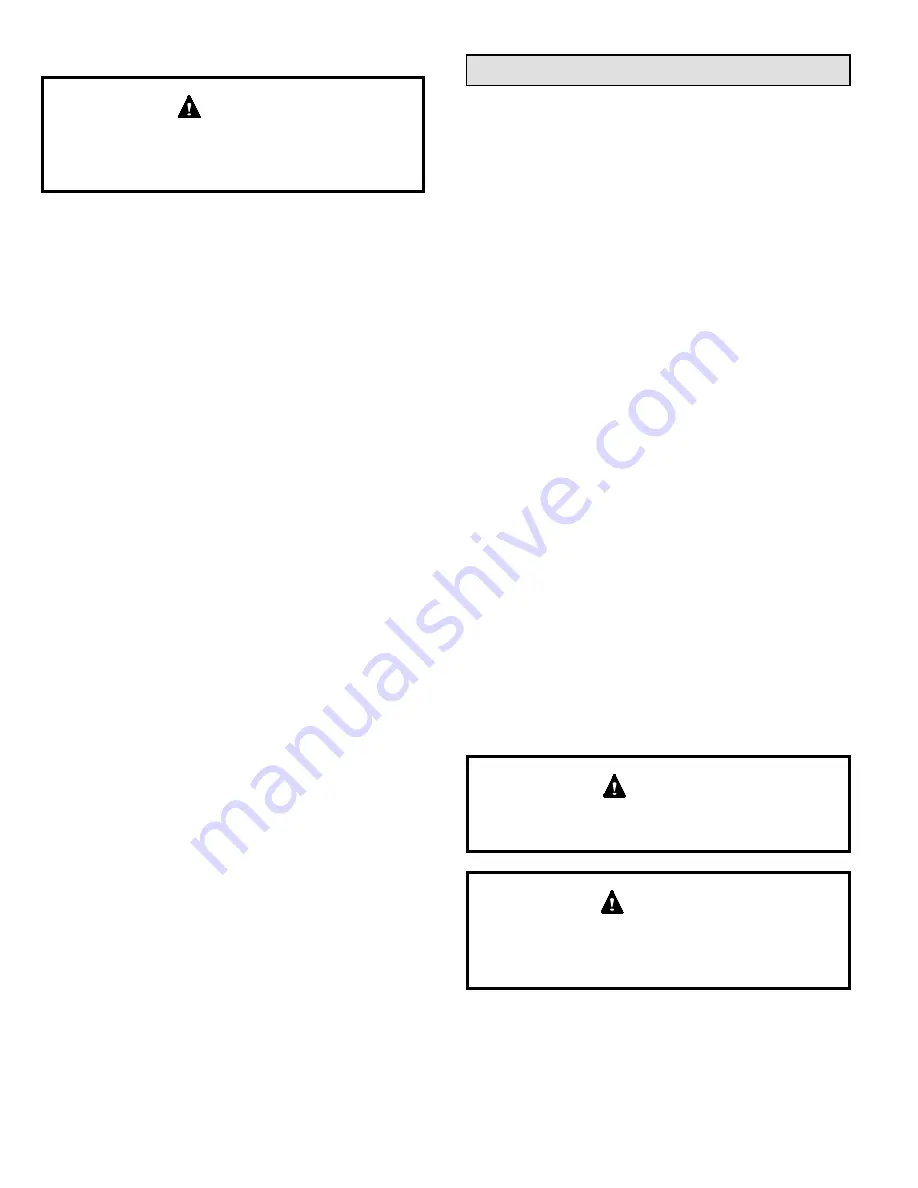
507715-01
Page 6 of 61
Issue 1716
General
These instructions are intended as a general guide and do
not supersede local codes in any way. Consult authorities
having jurisdiction before installation.
In addition to the requirements outlined previously, the
following general recommendations must be considered
when installing one of these furnaces:
•
Place the furnace as close to the center of the air
distribution system as possible. The furnace should
also be located close to the vent termination point.
•
When the furnace is installed in non-direct vent
applications, do not install the furnace where drafts
might blow directly into it. This could cause improper
combustion and unsafe operation.
•
When the furnace is installed in non-direct vent
applications, do not block the furnace combustion air
opening with clothing, boxes, doors, etc. Air is needed
for proper combustion and safe unit operation.
•
When the furnace is installed in an attic or other
insulated space, keep insulation away from the
furnace.
•
When the furnace is installed in an unconditioned
space, consider provisions required to prevent freezing
of condensate drain system.
NOTE:
The Commonwealth of Massachusetts stipulates
these additional requirements:
•
Gas furnaces shall be installed by a licensed plumber
or fitter only.
•
The gas cock must be “T handle” type.
•
When a furnace is installed in an attic, the passageway
to and service area surrounding the equipment shall
be floored.
These units should not be installed in areas normally
subject to freezing temperatures.
CAUTION
This product contains a chemical known to the State
of California to cause cancer, birth defects or other
reproductive harm.
WARNING
Use of Furnace as a Construction Heater
Gas furnaces manufactured on or after May 1, 2017,
are not permitted to be used in Canada for heating of
buildings or structures under construction.
WARNING
The following statement only applies to the US. Comfort-
Aire / Century does not recommend the use of these units
as a construction heater during any phase of construction.
Very low return air temperatures, harmful vapors,
construction dust and operation of the unit with clogged or
misplaced filters may damage the unit.
However, these units may be used for heating of buildings
or structures under construction in the US if the following
conditions are met to ensure proper operation:
•
The vent system must be permanently installed per
these installation instructions.
•
A room thermostat must control the furnace. The use
of fixed jumpers that will provide continuous heating is
not allowed.
•
The return air duct must be provided and sealed to the
furnace.
•
Return air temperature range between 60°F (16°C)
and 80°F (27°C) must be maintained.
•
Air filters must be installed in the system and must be
maintained during construction.
•
Air filters must be replaced upon construction
completion.
•
The input rate and temperature rise must be set per
the furnace rating plate.
•
One hundred percent (100%) outdoor air must be
provided for combustion air requirements during
construction. Temporary ducting may supply outdoor
air to the furnace. Do not connect duct directly to
the furnace. Size the temporary duct following the
instructions in section for Combustion, Dilution and
Ventilation Air in a confined space with air from outside.
•
The furnace heat exchanger, components, duct system,
air filters and evaporator coils must be thoroughly
cleaned following final construction cleanup.
•
All furnace operating conditions (including ignition,
input rate, temperature rise and venting) must be
verified according to these installation instructions.


